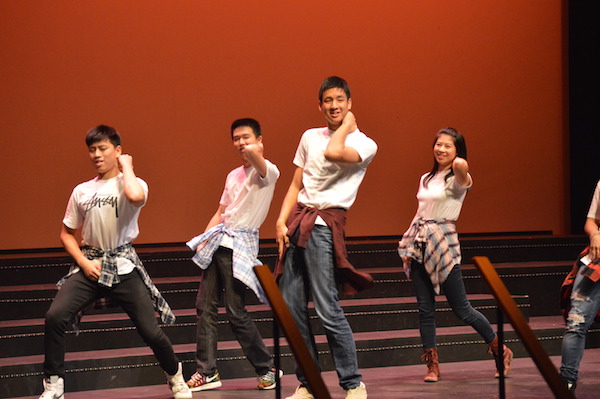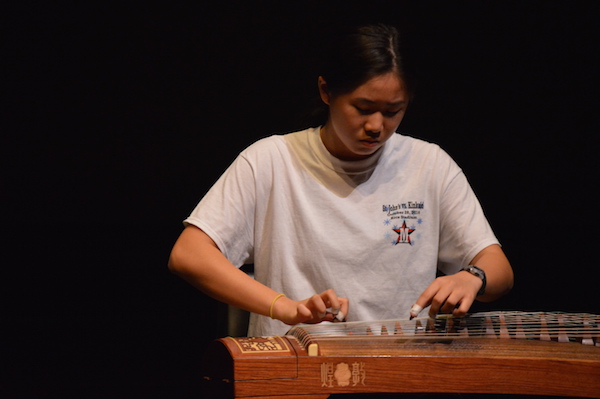East Asian Affinity Group highlights pop culture and racial identity

From left: Juniors Dani Yan, Andrew Wan, Gregory Dayao, and Olivia Zhang dance to K-pop.
February 18, 2017
Since late December, East Asian Affinity Group worked tirelessly to prepare for their assembly on Feb. 10, which highlighted their culture and promoted discussion about the challenges of racial stereotypes.
EAAG officer Gracie Jing and Terpsichore member Lindsey Ho choreographed a performance based off K-pop hits, which included “Save Me” and “I Need U” by BTS, “I Don’t Need a Man” by Miss A and “Dancing King” by EXO and Yoo Jae-suk.
“It was hilarious but also immensely rewarding to see people who were shy about dancing gain confidence and lose their inhibitions,” senior Sophia Chang said. “I think that really encapsulates the essence and purpose of our affinity group.”
Sophomore Sabrina Hu played the guzheng, a Chinese plucked string instrument. Lawyer Joyce Soliman, wife of history teacher Jack Soliman, delivered a speech about the challenges brought by the “model minority” stereotype and how she overcame those stereotypes as a lawyer. Coming from a family of doctors, Soliman also discussed how she became passionate about law despite pressures to pursue STEM fields.

Sophomore Sabrina Hu plays the guzheng, a traditional Chinese instrument.
“Asian-Americans are stereotyped in ways that appear positive, but these myths can be very damaging. For one, the ‘model minority’ pits Asian-Americans against other minority groups,” Jack said. “It also creates unhealthy expectations for young generations of Asian-Americans.”
In the 1980’s, a massive trade imbalance emerged between the American and Japanese car industries, causing tensions and hardship for American labor. Joyce’s family would only buy American cars during this time to demonstrate loyalty. In 1982, 27-year-old Chinese American Vincent Chin was beaten to death by two auto workers who blamed the Japanese auto industry for their struggles.
“At the time, many Asian immigrants were not culturally ready or were unwilling to rock the boat, and instead desired to keep a low profile,” Jack said. “The end result of the Chin murder was that Asian Americans finally began to associate with one another and learned of the need for continued Asian American activism.”
Affinity groups like EAAG help create a community of support and cultural appreciation.
“I love how EAAG integrates all four grades together,” senior Ethan Wang said. “EAAG has helped me to make friendships and connections with many students in grades above and below me.”
With the implementation of the new schedule, many affinity group leaders struggled to plan meetings but have found that assemblies can be an impactful outlet to communicate racial issues. Through the EAAG assembly, officers hoped to reach out to individuals who may be facing the same problems and show that they have a support group at the school.
“Affinity group assemblies are important at St. John’s because affinity groups don’t get the exposure they deserve,” Wang said. “Many students, even those of minority backgrounds, do not even know that certain groups exist, and many consider the groups to be unimportant or irrelevant.”
The assemblies also offer students a way to become more educated about diversity by exposing them to different perspectives.
“They promote an understanding of the struggles minority groups often face,” Chang said. “I think exposing the student body to these new perspectives helps foster an empathetic and accepting school environment.”



